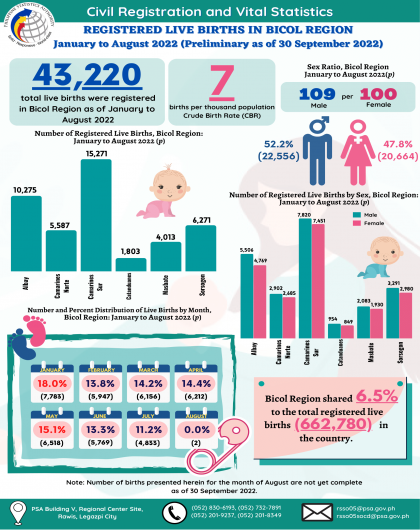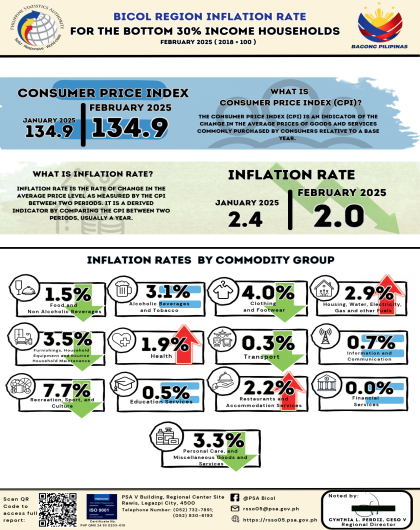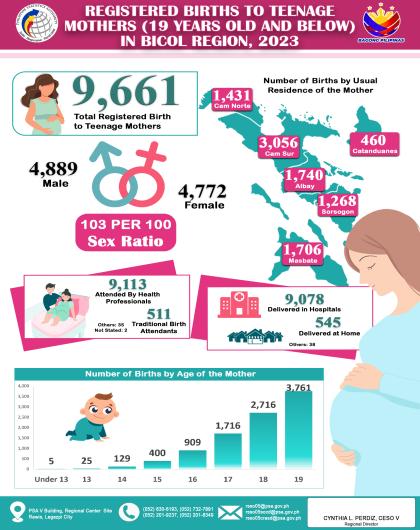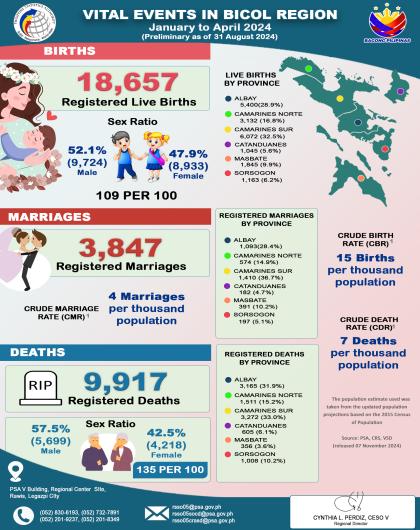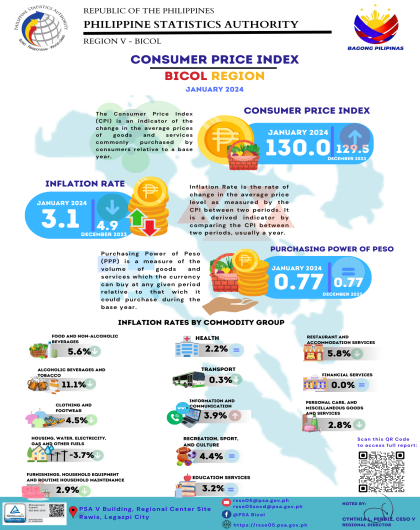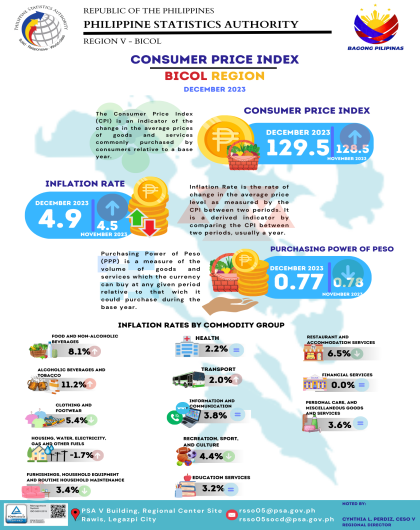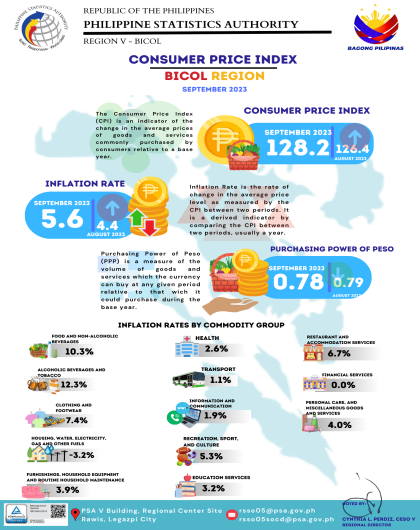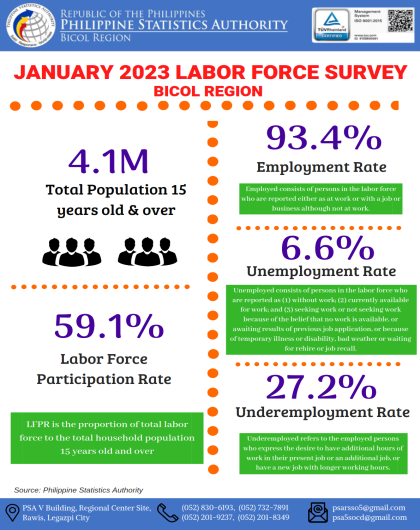Albay


1. Overall Inflation
The Albay’s inflation rate for the bottom 30% income household decreased to 4.4 percent in February 2024 from 4.7 percent in January 2024. This makes the provincial average inflation from January to February 2024 at 4.5 percent. In February 2023, the inflation rate was higher at 8.8 percent. (Figure 1 and Table 1)
1.1 Main Driver to the downtrend of the Headline Inflation
The downtrend in the overall inflation of the bottom 30% income household in February 2024 was primarily brought about by the slower year-on-year increase in the heavily weighted Housing, Water, Electricity, Gas and Other Fuels at -4.9 percent in February 2024 from -1.2 percent in the previous month.
In addition, slower annual increases were noted in the indices of the following commodity groups during the month:
a. Alcoholic Beverages and Tobacco, at 9.7 percent from 11.6 percent;
b. Personal Care, and Miscellaneous Goods and Services, at 2.2 percent from 2.6 percent;
c. Health, at 3.3 percent from 4.1 percent;
d. Clothing and Footwear, at 4.8 percent from 5.2 percent; and
e. Recreation, Sport and Culture, at 4.6 percent from 5.8 percent.
In contrast, faster annual increase was observed in the indices of Food and Non-Alcoholic Beverages, at 8.0 percent from 7.2 percent, Furnishings, Household Equipment and Routine Household Maintenance at 4.3 percent from 3.8 percent and Transport at 1.3 percent from 1.2 percent for January 2024.
The following commodity groups maintained the inflation rate of previous month:
a. Information and Communication, at 0.4 percent;
b. Education Services, at 4.1 percent;
c. Restaurant and Accommodation Services, at 3.6 percent; and
d. Financial Services, at 0.0 percent.
1.2 Main Contribution to Headline Inflation
The top three commodity groups that contributed to the February 2024 inflation of the bottom 30% income household were the following:
a. Food and Non-Alcoholic Beverages with 94.4 percent share or 4.15 percentage points;
b. Restaurants and Accommodation Services with 6.4 percent share or 0.28 percentage points; and
c. Alcoholic Beverages and Tobacco with 4.9 percent share or 0.21 percentage points.
2. Food Inflation
Food inflation at the provincial level for the bottom 30% income household increased to 8.3 percent in February 2024 from 7.3 percent in the previous month. In February 2023, Food inflation was higher at 10.3 percent.
2.1 Main Driver to the Uptrend of Food Inflation
The acceleration of food inflation in February 2024 was primarily influenced by the higher annual growth of Vegetables, Tubers, Plantains, Cooking Bananas and Pulses at -12.1 percent during the month from -20.5 percent in January 2024. This was followed by Meat and Other Parts of Slaughtered Land Animals with an inflation rate of 0.0 percent in February 2024 from -1.1 percent
In contrast, slower annual increase in the indices of the following food groups were observed:
a. Cereals and Cereal Products, at 28.9 percent from 29.1 percent;
b. Milk, Other Dairy Products and Eggs, at 1.6 percent from 3.6 percent;
c. Fruits and Nuts, at 2.4 percent from 3.2 percent; and
d. Ready-Made Food and Other Food Products N.E.C., at 8.2 percent from 8.5 percent.
In addition, Fish and Other Seafood recorded an annual decrease of 1.2 percent from annual decrease of 0.8 percent, Oils and Fats recorded annual decrease of 11.6 percent from annual decrease of 9.4 percent, and Sugar, Confectionery and Desserts recorded annual decrease of 4.1 percent from annual decrease of 2.8 percent.
2.2 Main Contribution to the Food Inflation
Food inflation contributed 92.7 percent or 4.08 percentage points to the overall inflation of the bottom 30% income household in February 2024. Food groups with the highest to food inflation during the month were the following:
a. Cereals and Cereal Products, which includes Rice, Corn, Flour, Bread and Other Bakery Products, with 108.2 percent share or 8.98 percentage points;
b. Ready-Made Food and Other Food Products N.E.C., with 3.0 percent share or 0.25 percentage points; and
c. Fruits and Nuts, with 1.1 percent share or 0.09 percentage points.





